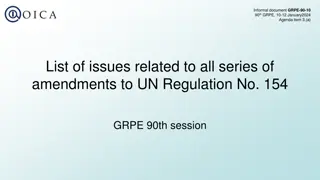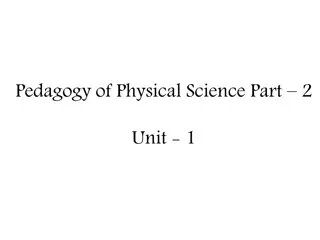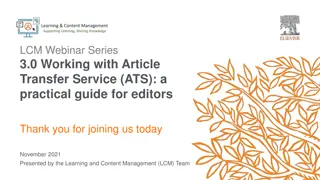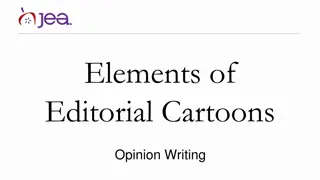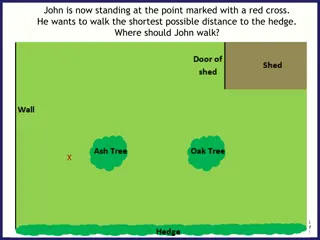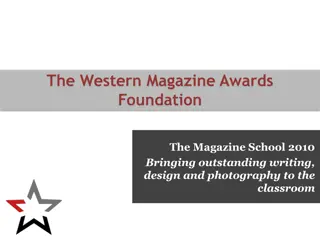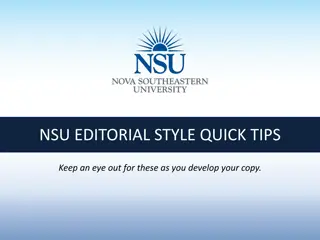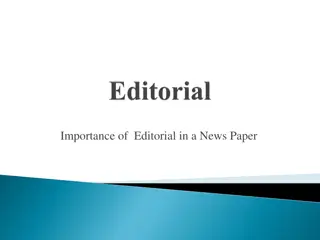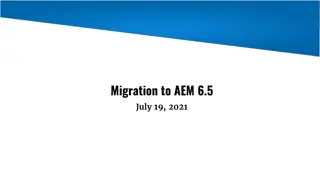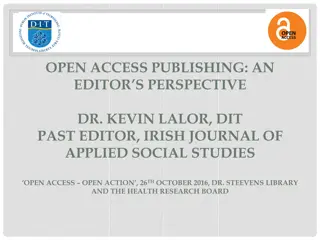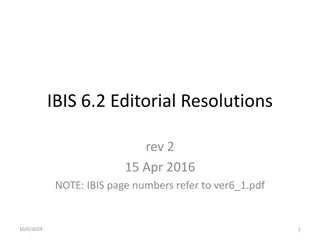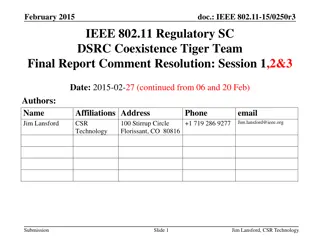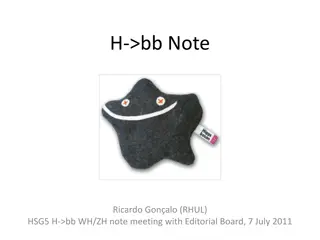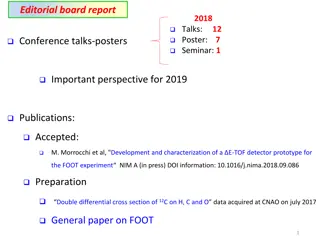Constructing Editorial Comments Collaboratively
The Qualitative Report Best Practices Series emphasizes the collaborative effort in providing meaningful editorial comments to enhance authors' research articles. The series aims to elevate qualitative research reporting through guidance for authors, reviewers, and editors, promoting quality and supportive relationships within the academic community.
Download Presentation

Please find below an Image/Link to download the presentation.
The content on the website is provided AS IS for your information and personal use only. It may not be sold, licensed, or shared on other websites without obtaining consent from the author.If you encounter any issues during the download, it is possible that the publisher has removed the file from their server.
You are allowed to download the files provided on this website for personal or commercial use, subject to the condition that they are used lawfully. All files are the property of their respective owners.
The content on the website is provided AS IS for your information and personal use only. It may not be sold, licensed, or shared on other websites without obtaining consent from the author.
E N D
Presentation Transcript
Constructing Editorial Comments Collaboratively or Meaningful Moments in the Margins The Qualitative Report Best Practices Series Ronald J. Chenail, Editor-in-Chief Sally St. George, Senior Editor
The Qualitative Report (TQR) Best Practices Series We designed these presentations to help our editors and reviewers learn the TQR approach to helping authors improve their articles and to learn and utilize best practices in reporting their research studies. We also hope authors consult these resources as they prepare their papers for submission. As a learning community, we feel our mission is not only to help authors learn how to write better, reviewers how to review better, and editors how to edit better, but also to help our readers to appreciate the aesthetic qualities of a paper well-written. Please feel free to use these resources in your teaching and learning!
The Qualitative Report Editorial Board Commitment to Quality Help authors improve their qualitative research reporting Utilize best practices in contemporary qualitative research practice and presentation Publish articles reflecting the best quality in qualitative research Maintain supportive and respectful relations
TQR 5 Cs for Quality Creativity Control Clarity Consistency Coherence
Constructing Editorial Comments Collaboratively
TQR Editorial System Team-Leading Editor Read Comment Advise Read Comment Advise Read Comment Advise Reviewer Senior Editor
TQR Editorial System Reviewer T-L Editor Senior Editor Editor-in-Chief Read-Comment-Advise-Decide
Tools of Our Trade: Microsoft Word Review
Ready Review Comments Styles Writing Conventions Reading Appreciation
The Qualitative Report TQR Ready Review Comments To help you as a reviewer for TQR, we have composed this guide to help you articulate the journal editorial baord s collective perspective on quality in qualitative research practice and reporting. We offer these comments in the spirit of helping you create an informative review. You are encouraged to incorporate relevant items into your commentary on the paper and to customize them to better address the particular issues you have identified in your author s paper. We do ask that you not merely cut and paste our comments into your review without thoughtfully considering the context of those comments. https://cpb-us-e1.wpmucdn.com/sites.nova.edu/dist/a/4/files/2018/08/TQR_Ready_Review_Comments_081118-1ba7vsy.pdf
Building a respectful supportive relationship Thank you for your revised manuscript! We appreciate the work you have put into improving your paper! As you can see below, we still have some ways in which we would like you to enhance your paper. In revising your paper, please use the Comments tool to insert responses to our comments to let us know how you revised the text of the paper. Thank you for giving us this opportunity to review your paper! Using the MS Word Comment feature, we have inserted a few comments in your paper offered in the spirit of helping you to make your paper even better. Please review them as you revise and resubmit your paper. Ron Chenail Editor-in-Chief The Qualitative Report Ron Chenail Editor-in-Chief The Qualitative Report
Ready Review Comments Before moving on to Methods we ask all authors to provide a brief discussion of their own context. This is based on a belief that who you are and how you are involved with the topic and study will influence the presentation. We want readers to have a fair understanding of the researcher to make the fullest evaluation of the study and to have greater confidence in what they are about to read. Toward that end, please tell us your relationship to this inquiry. Who are you? What is your interest in this topic? What is your investment in this project? What are your intentions? Please provide a statement of third- party approval that you secured to conduct this study (e.g., Institutional Review Board for the Protection of Human Subjects) or if your local context does not require such oversight, then please indicate this and describe how you ensured ethical research practice to protect participants safety, privacy, and confidentiality. If the study was deemed to be exempted or excluded from IRB review, please make note of it.
APA Matters Please double check formatting of ellipsis throughout your manuscript. Thank you. Please consult APA so that all hyphens are properly formatted. Thanks. We use APA formatting. Please revise the formatting of anything in a series. In APA, research reports end with the Discussion section, so please either delete your Conclusion or weave that information into one of your Discussion section elements.
Writing matters too For clarity purposes in writing, please use active voice and first or third person pronouns to express attribution. For example, here, it would be much clearer to write, We used a multicase approach Please see pages 68-70 in the APA Publication Manual for more detail on this style of writing.
Let them know your reading their paper I do not recall seeing this in the description of your analytical process. What does this refer to? I don t see these words listed in above table. We need to see every step that you took including who conducted which steps. Please demonstrate how you transformed data through analysis into results. Please include examples of your processes to make it even more vivid.
Show your appreciation! I appreciate the contrast here. Above with envisioning before is lack, present is replete. Here, urgency is recast after recovery, experienced differently. Nicely done. I really appreciate this it clearly conveys how envisioning relies on believing you might have some control over the future or that you might have a future at all. I would imagine there is much in the addiction and recovery literature to support this idea, to help connect Shane s story to others experiences and the literature.
Editor Comments Novel Reflective Supportive Collaborative
Collaborating Towards Quality Team-Leading Editor Reviewer Author Senior Editor Editor-in-Chief
Questions, Comments, Suggestions
Contact Information Ron Chenail, PhD The Qualitative Report: https://tqr.nova.edu/ Nova Southeastern University Graduate School of Arts, Humanities and Social Sciences 3301 College Avenue Fort Lauderdale, Florida USA 33314 Phone: 954.262.3019 Email: ron@nova.edu



